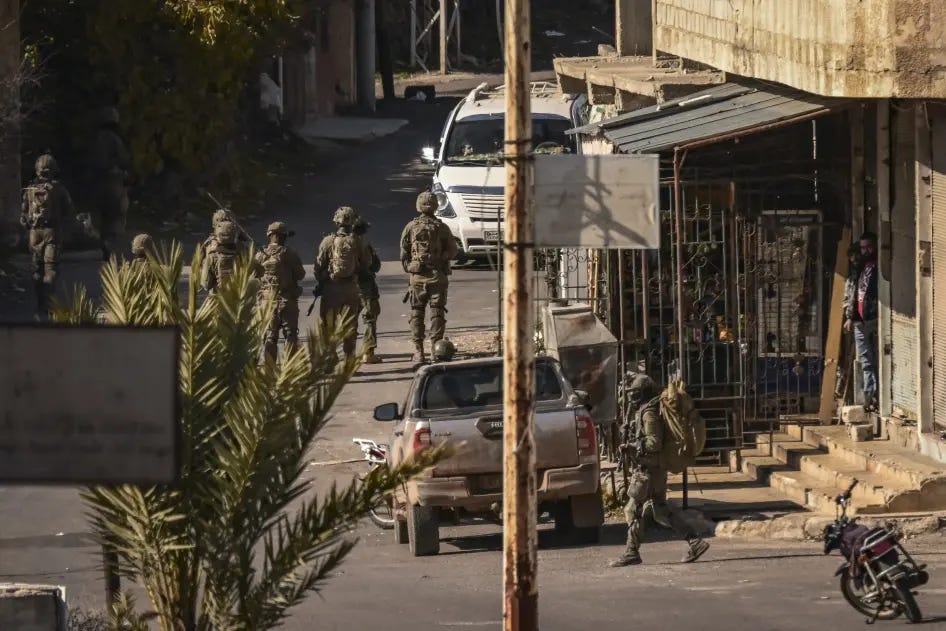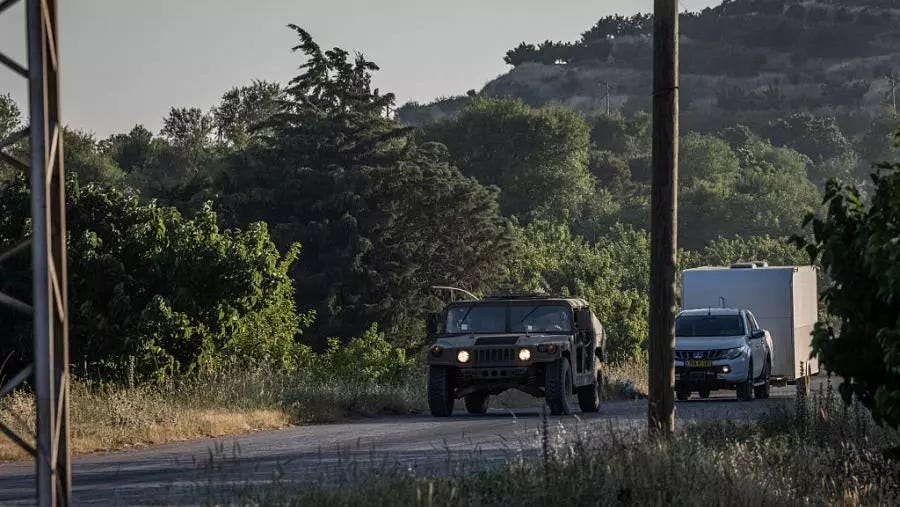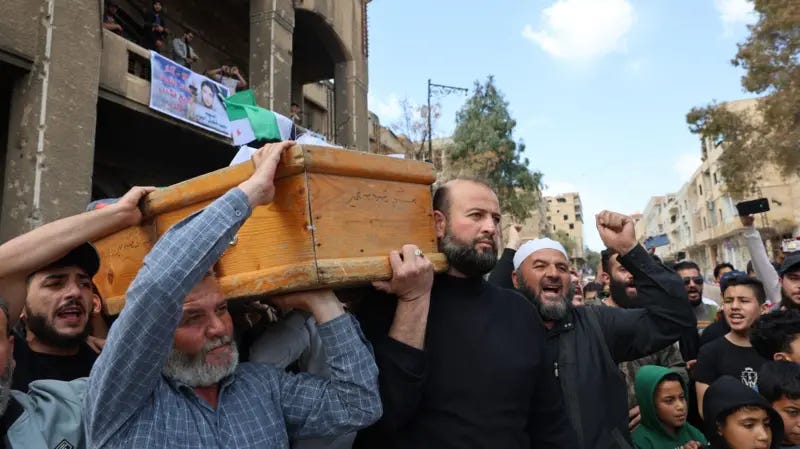
In a strikingly timed move, Human Rights Watch has released a new report titled “Syria: Israel Forcibly Displaces Residents from Villages It Occupies in the South.” The report documents what it describes as systematic violations by Israeli forces in Syrian territories they have occupied since late 2024.
It details incidents of forced displacement of villagers, demolition of homes, seizure of property, and the unlawful transfer of Syrian detainees into Israel—clear breaches of international humanitarian law.
The release comes amid growing chatter about behind-the-scenes security negotiations between Damascus and Tel Aviv, with signs pointing to the possibility of an agreement.
In a televised interview aired by the state-run Al-Ikhbariya channel, Syrian President Ahmad Al-Shara confirmed “real progress” in the ongoing talks, indicating that preliminary understandings had been reached concerning security arrangements in the southern contact zones.
This confluence of events presents a stark paradox: while international organizations are documenting serious violations affecting Syrian civilians, diplomatic efforts are simultaneously underway to craft understandings that could redefine security relations between the two sides.
This raises critical questions about the prospects of these talks and their capacity to address the impact of such violations, especially those infringing upon the basic rights of residents in the occupied areas.
What Does the Report Reveal?
The Human Rights Watch report, published on September 17, 2025, paints a grim picture of life in southern Syrian villages under Israeli occupation—especially around the areas of Jubata al-Khashab and Al-Hamidiyah, near the Golan ceasefire line.
Based on direct testimonies, video evidence, and satellite imagery, the report accuses Israeli forces of a series of violations that qualify under international law as “crimes amounting to forced displacement.”
According to the organization, the escalation began in late 2024, following an attack launched by Iran-linked armed groups from southern Syria. Under the pretext of “neutralizing security threats,” Israeli forces carried out extensive raids and searches, followed by the forcible evacuation of residents and the imposition of a military cordon barring their return.

The report documents cases where entire families were expelled without warning and denied the right to take essential belongings actions that directly violate Article 49 of the Fourth Geneva Convention.
The violations expanded to include the illegal demolition of homes following their seizure. The report notes that Israel invoked security pretexts to give a veneer of legality to these actions.
However, the recurring pattern of demolitions especially targeting homes never used for military purposes raises serious concerns about a deliberate attempt to alter the region’s demographic landscape. Satellite images show a significant transformation in residential patterns and a marked decline in vital infrastructure such as farms and wells, suggesting that locals were systematically deprived of their livelihoods.
One of the report’s most alarming findings is the unlawful transfer of Syrian detainees into Israel. Human Rights Watch documented field detentions in the vicinity of Jubata al-Khashab, with some individuals taken into Israeli territory without formal charges or access to legal counsel or family contact an act that constitutes enforced disappearance and a violation of both the Geneva Conventions and international human rights law.
The language of the report notably refers to a “recurring pattern” rather than isolated incidents, suggesting that Israeli policies in southern Syria are not reactive but part of a broader security-political strategy aimed at reshaping realities on the ground ahead of any potential regional understandings.
This inference is reinforced by concurrent Israeli military activity near contact zones, including in Tel Ahmar and Tal Kroum.
Human Rights Watch also highlighted the absence of a legal framework to protect local populations and the failure of the United Nations and other international bodies to intervene or even issue official statements.
This has deepened the perception among residents that they are abandoned caught between foreign military occupation and the collapse of Syrian state institutions in the south.
Thus, the report goes beyond documentation, sounding the alarm over an unprecedented deterioration in human rights conditions in Israeli-occupied southern Syria. The organization calls for urgent international action—not only to pressure Israel to halt these violations but also to ensure minimal protection for civilians until a political and security resolution is achieved.
A Security Agreement in the Making
In parallel, attention is increasingly focused on a quiet negotiation track that could redefine the rules of engagement between Damascus and Tel Aviv. In his remarks on Wednesday evening, President Ahmad Al-Shara officially confirmed the existence of security talks with Israel, stating that the understandings could lead to concrete outcomes within days provided they guarantee “respect for Syrian airspace and territorial integrity” under clear UN sponsorship.
Al-Shara made it clear that “peace and normalization are not on the table,” a calculated effort to distance these talks from ongoing regional normalization efforts. He also stressed that Washington was not applying direct pressure on Damascus but was instead playing a mediating role, reflecting Syria’s desire to maintain some degree of political autonomy amid complex international dynamics.
While Damascus has maintained a cautious tone, media and political leaks have revealed more precise details about the negotiations. A Syrian government source told Al Jazeera that a meeting took place in London between Syrian Foreign Minister Asaad Al-Shibani and his Israeli counterpart Ron Dermer. The two reportedly discussed de-escalation arrangements based on the 1974 Disengagement Agreement.
According to the source, the Syrian side conditioned any deal on Israel’s full withdrawal from territories it occupied after December 8, 2024, along with the redeployment of UN forces in the buffer zone.
So far, Syria's position has remained firm on the principle of territorial unity, with officials declaring that no agreement would be acceptable if it undermined national sovereignty. The source also emphasized that any sustainable peace must address the root causes of tension, chief among them Israel’s ongoing occupation of the Golan Heights and surrounding areas.
Meanwhile, a report by Axios shed further light on Israel’s intentions, revealing a proposal presented to Damascus involving the division of southwestern Syria into three demilitarized zones mirroring the Camp David model with Egypt. The plan includes expanding the buffer zone by an additional two kilometers inside Syrian territory and establishing a no-fly zone for Syrian aircraft over the area stretching from southwest Damascus to the border.
The proposal also outlines a phased Israeli withdrawal from areas it captured after the collapse of the previous regime excluding Mount Hermon, which Israel now considers a strategic asset it cannot relinquish under current circumstances.
If accurate, these terms suggest an Israeli push to impose a new security reality that would severely restrict Syrian government movement even within its nominal jurisdiction, in exchange for limited territorial concessions.
Simultaneously, Al-Araby TV cited a Syrian government source confirming that the Syrian delegation presented a de-escalation blueprint during the London meeting. This plan involves recommitting to the 1974 lines in exchange for Syrian guarantees on border security and a halt to all military activity from the south.
Commenting on the leaked proposals, Dr. Marwan Kabalan, head of the Policy Unit at the Arab Center for Research and Policy Studies, said the Israeli plan—if confirmed—would be “unacceptable” and represents an attempt to entrench new facts under the guise of “security arrangements.”
In an interview with Al-Araby TV, Kabalan warned that Syria’s political and economic vulnerability could drive it to sign an agreement that serves only Israel’s strategic interests. He added that Syria’s primary option should be to build a strong domestic front capable of establishing a credible deterrent—not to accept security terms that come at the expense of sovereignty.
Amid this complex scene, three major developments are shaping the current phase in southern Syria: a human rights report documenting grave Israeli violations on the ground, ongoing political negotiations seeking yet-undefined security arrangements, and domestic voices warning against concessions imposed by battlefield realities rather than sovereign principles.
On one hand, Human Rights Watch's findings reveal a systematic pattern of forced displacement and disruption of southern Syria's demographic and economic fabric. Any deal that fails to address these violations will leave the roots of the conflict intact. On the other hand, the ongoing negotiations appear to aim more at containing escalation than offering a comprehensive solution, as the parties remain far apart in their conditions and the Syrian public is largely kept in the dark.



